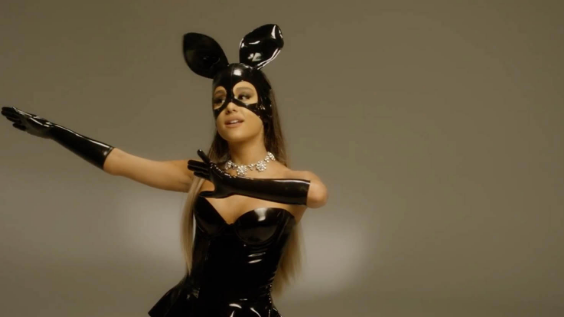There was something different about the past. And it wasn’t just that it was better, pop culturally speaking, but also that gay men seemed to admire female icons with a more, shall we say, camp flair. You know, Judy Garland, Ethel Merman, Cher, Madonna, et. al. Shit, even Cyndi Lauper. Even Janet and Mariah have more kitsch going for them than what the current landscape of prosaic female pop stars has to offer. There is, of course, the head of the basic army, Taylor Swift, but underneath her are two subsets, Selena Gomez and, most popularly among the eighteen to twenty-five gay set, Ariana Grande.
Her third album, Dangerous Woman, has further propelled her into the stratosphere of twink icondom, with “fun” little ditties, including the title track, “Into You” and “Let Me Love You,” serving as a means to buttress the appeal of her frivolity. The supposed daringness of the entire theme (look! she’s modeling herself after a Playboy bunny!) is irony at its finest in terms of the safe execution of it all, with the album cover’s image of her head cocked in a black bunny mask serving as the extent of how “provocative” mainstream sexuality can be. The video for “Dangerous Woman” is an extension of that, with Grande’s so-called element of “danger” being prancing around in lingerie.
Gone are the days of gay icons with music and videos that actually made a statement about anything beyond “being cute.” No burning crosses (“Like A Prayer”), no epic dance sequences (“Rhythm Nation”), no blatant shade being thrown (“Obsessed”). And so, the homosexuality of the new era has spawned another “homo” word: homogeneity.
There might be “technical” goodness to Grande’s voice–oft compared to Mariah Carey–but where is the chutzpah, the charisma of those who preceded and inspired her? Her banality as a persona is what is most concerning, as it indicates a certain waning in the edge and tolerance for the weird, macabre and clinquant that the gay community once had, most notably, it would seem, in the 80s. It was they we would look to for the obscure, the underground, the avant-garde. Where are we supposed to look now? To straight girls with masculine energy, or simply to the past?
Further, is it really the fault of the gays for liking such tripe, or is it merely that the panorama of the twenty-first century is so lackluster that there is no longer any room for such radical notions as sardonicism? It’s almost as though no one has any goddamn sense of humor anymore (it’s hard to imagine, for example, Madonna ripping up an image of Joey Buttafuoco on SNL going over very well now). And then there is the consideration that, because same sex-oriented folk have been permitted the generally-hated-by-straights luxury of domesticity via the legalization of gay marriage, there exists in their lives a sort of comfortableness and monotony that was never “permissible” before. Lady Gaga relying heavily on duets with Tony Bennett and Ariana Grande are direct results of this previously unheard of trend in gay culture. It is, thus, possible that if we’re desperate enough, we may actually need to rely on straight people (evermore a novelty) for pop culture of a resplendent nature.





















[…] calculation. It is a stock formula of every pop star to go from cookie cutter good girl to “dangerous woman.” It’s a tale as old as time, ranging from the likes of Britney Spears and Christina […]
[…] of everyone in the audience that punk is dead–mainly because some girl wearing a tutu and an Ariana Grande tank top screamed it at the top of her […]